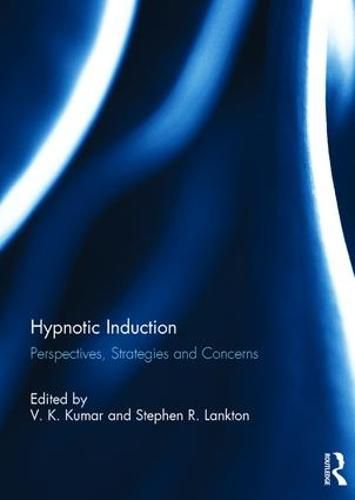Readings Newsletter
Become a Readings Member to make your shopping experience even easier.
Sign in or sign up for free!
You’re not far away from qualifying for FREE standard shipping within Australia
You’ve qualified for FREE standard shipping within Australia
The cart is loading…






The age-old notion of ‘hypnotic induction’ receives a fresh look from notable scholars from Canada, England, Sweden, and the USA in this book. These scholars represent a breadth of theoretical perspectives: cognitive-behavioral, Ericksonian, psychoanalytic, and trance-state. It is well known that a wide range of hypnotic induction protocols is used to prepare individuals to enhance their receptivity to test or clinical suggestions. However, despite its popularity of use, it appears that little is known about its relevancy and boundary conditions either for testing for hypnotisability or for enhancing clinical efficacy. In this volume, the authors reflect on issues surrounding its definitions, relevancy, possible components, and approaches; they also suggest considerations and strategies for optimizing inductions. This book will be of benefit to both newcomers to the field and seasoned researchers and clinicians alike - it can stimulate new thinking and research about this important, but often taken for granted, notion of hypnotic induction. This book was originally published as a special issue of the American Journal of Clinical Hypnosis.
$9.00 standard shipping within Australia
FREE standard shipping within Australia for orders over $100.00
Express & International shipping calculated at checkout
The age-old notion of ‘hypnotic induction’ receives a fresh look from notable scholars from Canada, England, Sweden, and the USA in this book. These scholars represent a breadth of theoretical perspectives: cognitive-behavioral, Ericksonian, psychoanalytic, and trance-state. It is well known that a wide range of hypnotic induction protocols is used to prepare individuals to enhance their receptivity to test or clinical suggestions. However, despite its popularity of use, it appears that little is known about its relevancy and boundary conditions either for testing for hypnotisability or for enhancing clinical efficacy. In this volume, the authors reflect on issues surrounding its definitions, relevancy, possible components, and approaches; they also suggest considerations and strategies for optimizing inductions. This book will be of benefit to both newcomers to the field and seasoned researchers and clinicians alike - it can stimulate new thinking and research about this important, but often taken for granted, notion of hypnotic induction. This book was originally published as a special issue of the American Journal of Clinical Hypnosis.